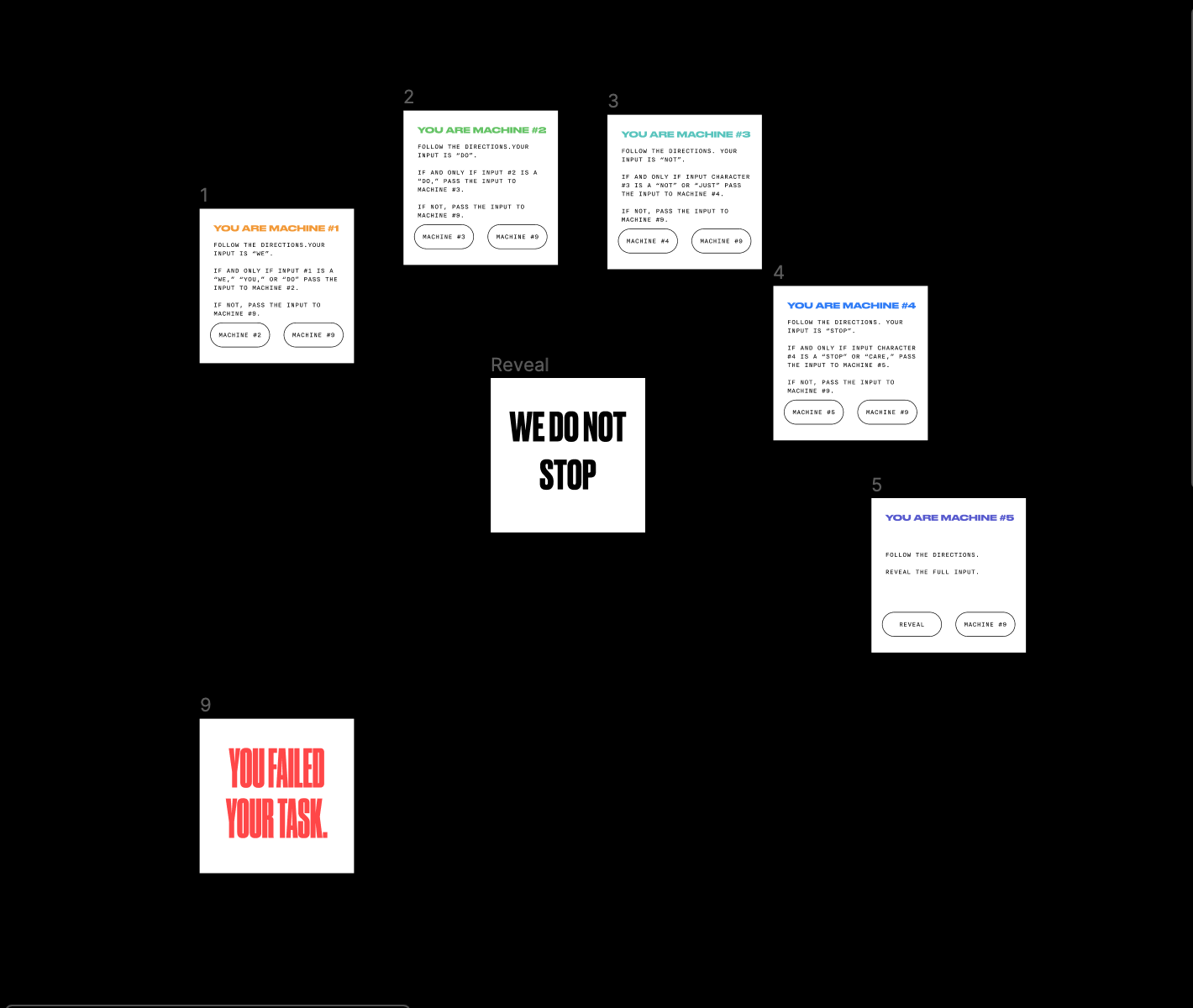Sean Barrett, Eli Nathan
Our concept looks at the idea of automation, recursion, and respite. Images of production representing progression through industrial, analog, and digital eras are projected on the surface of a series of scaling cubes whose essential geometric nature evokes both calm and resilience. The audio and visual cacophony is interrupted at irregular intervals allowing the viewer a momentary respite in which they can focus on a single element before being plunged back into the fray. The installation has been placed into an active studio environment surrounded by a constantly shifting landscape of ongoing projects incorporating these physical tools and materials into the installation in order to create an immersive narrative experience where the viewers might more easily conceive of themselves as participants.






Janice Kim, Rachel Shapiro, Eli Nathan
Responding to the prompts of automation, conformity, otherness/exploitation creating an interactive interface where human vs. machine roles are superimposed thorough a series of input an output modules for the users. This series of interactions are designed in Figma and populated as a webpage. Each user is allowed one interaction in the chain and intelligence is only achieved through an accumulation of simple instructions through the collective action.
______
Highlights from a pop-up showcase of students work in "Graphic Design with Creative Technologies" course at University of Pennsylvania.
This studio course aims to investigate theoretical frameworks, critically address contemporary issues and enable the origination of new forms and concepts as they pertain to technology in design and communication practice. Theory-driven concepts that were woven into the coursework include topics such as:
• Innovation design, creativity and design (Worldmaking/affordances/ establishing Paradigms/Laws and Constraints/language/ideology/dismantling the everyday/ interpretive and expressive media/etc.)
• Tras-media/ trans-medium (Interactivity vs. Participatory /Enactive perception//Light and sound/sensorial design/Performance vs. Performativity/Real world story telling vs.Virtual Storytelling/etc.)
• Spacial Problems (Materiality vs. Immateriality/Site-Specificity/Architecture//urbanism/geolocated media/adversarial design/ambient and artificial intelligence/communication “mash up"/etc.)
